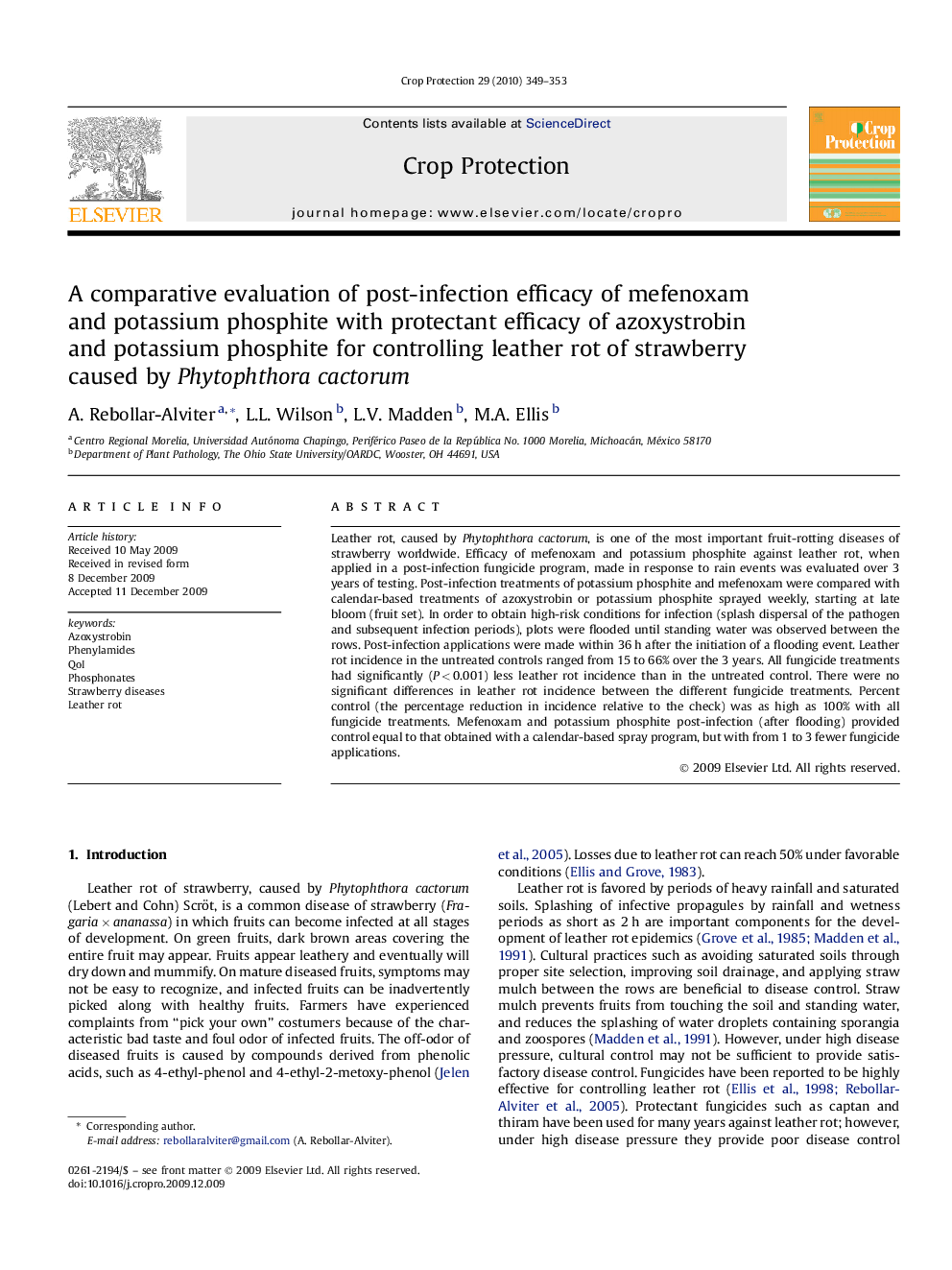| کد مقاله | کد نشریه | سال انتشار | مقاله انگلیسی | نسخه تمام متن |
|---|---|---|---|---|
| 4507468 | 1321357 | 2010 | 5 صفحه PDF | دانلود رایگان |

Leather rot, caused by Phytophthora cactorum, is one of the most important fruit-rotting diseases of strawberry worldwide. Efficacy of mefenoxam and potassium phosphite against leather rot, when applied in a post-infection fungicide program, made in response to rain events was evaluated over 3 years of testing. Post-infection treatments of potassium phosphite and mefenoxam were compared with calendar-based treatments of azoxystrobin or potassium phosphite sprayed weekly, starting at late bloom (fruit set). In order to obtain high-risk conditions for infection (splash dispersal of the pathogen and subsequent infection periods), plots were flooded until standing water was observed between the rows. Post-infection applications were made within 36 h after the initiation of a flooding event. Leather rot incidence in the untreated controls ranged from 15 to 66% over the 3 years. All fungicide treatments had significantly (P < 0.001) less leather rot incidence than in the untreated control. There were no significant differences in leather rot incidence between the different fungicide treatments. Percent control (the percentage reduction in incidence relative to the check) was as high as 100% with all fungicide treatments. Mefenoxam and potassium phosphite post-infection (after flooding) provided control equal to that obtained with a calendar-based spray program, but with from 1 to 3 fewer fungicide applications.
Journal: Crop Protection - Volume 29, Issue 4, April 2010, Pages 349–353